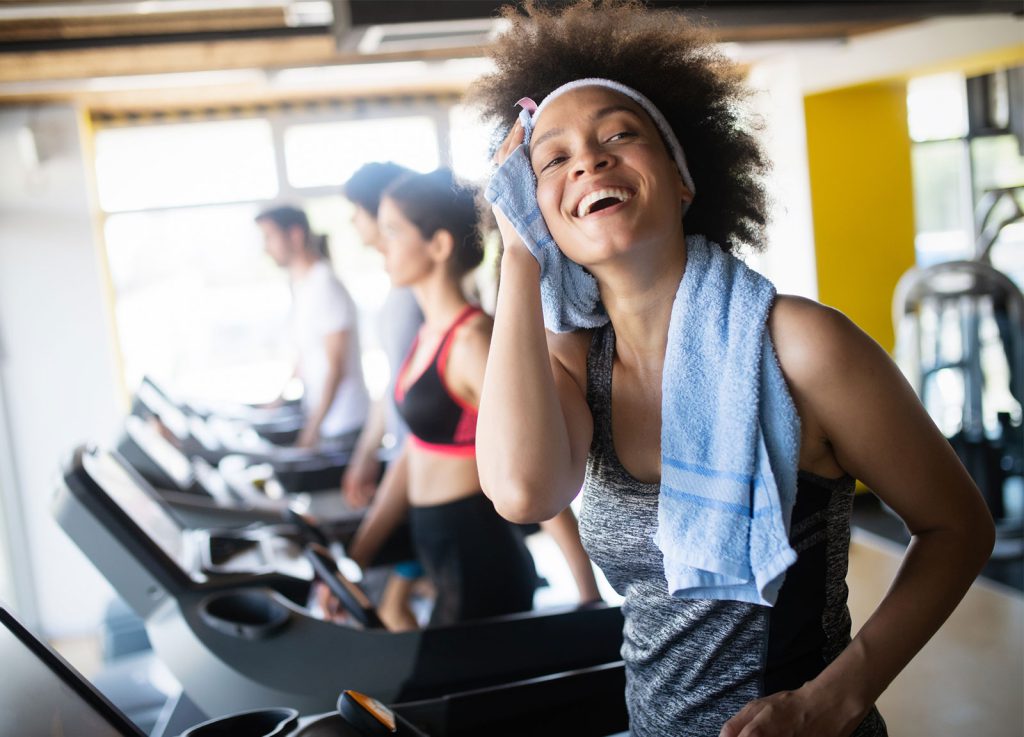In addition to poor nutrition, physical inactivity is directly linked to obesity and other chronic diseases. According to recent Behavioral Risk Factor Surveillance System data, adult obesity rates now exceed 35% in 19 states.1
We have already discussed the fact that physical inactivity leads to obesity, which is a major cause of chronic disease, such as high blood pressure and diabetes, resulting in decreased life expectancy. It is also common knowledge that physical activity improves health outcomes. Following are many of the positive benefits that physical activity has on our health:2
- Controls weight
- Reduces risk of heart disease (#1 killer), stroke (#5 killer), diabetes, metabolic syndrome, and breast and colon cancer
- Strengthens bones and muscles
- Improves mental health and mood
- Improves one’s ability to perform daily activities
- Prevents falls, if elderly
- Increases chances that you will live longer
Additional benefits of exercise include the following:3
- Builds aerobic power, which improves breathing
- Reduces blood pressure
- Lowers risk of Type 2 diabetes, arthritis, and dementia
- Maintains immune functioning
- Reduces body fat
- Boosts energy
- Improves sex life
- Improves sleep, mood, and memory
- Reduces anxiety
- Feels fun
- Reduces absenteeism

In reviewing the list, you may ask yourself, “Why don’t I exercise more?” Below you will find some of the common excuses people use for not exercising regularly.
Excuse: Lack of time.
Solutions: While watching TV, walk in place or improve your strength with resistance bands. Record your programs to watch for later, eliminating ads, and exercise then. Break workouts into short increments.
Excuse: Too tired.
Solutions: Work out in the morning before starting your day. If you are not a morning person, do it when you feel your best such as over your lunch time. Exercising will give you ENERGY.
Excuse: No break from the kids.
Solutions: Take the kids with you to a park/playground and walk around or jump rope near where they are playing. Find exercises that you can do with your children such as walking, biking, playing badminton, active video games (e.g., Wii Fit).
Excuse: Exercise is boring.
Solutions: Find an activity that you love, such as skating, dancing, or even gardening. Do something you love while exercising, such as watching TV or reading. Exercise with a friend or join a group exercise class.
Excuse: Don’t like to move.
Solutions: Determine why you do not like to move. For example, is it because you do not like to get sweaty? If so, exercise where there is AC or go swimming. Try low-impact exercise, such as Pilates or yoga. If it hurts your joints, try swimming, which protects the joints, while strengthening your muscles. If you are self-conscious about your weight, work out at home or with friends/personal trainer and wear clothes that you feel comfortable in.
Excuse: Tried it before.
Solutions: Start out slow – ANYTHING is better than doing nothing. At first, try 15 minutes twice per day and gradually add more time to one of your workouts, while subtracting time from the other workout. Set short-term, realistic goals that are achievable. Keep a log and post it. Find a buddy to keep you accountable.

Set a good example for your family. Here are some fun ways to get your FAMILY moving toward good health and happiness:
- Model positive physical activity, lead an active lifestyle yourself.
- Build physical activity into your family’s daily routine. Take a walk after dinner together or do housework or yard work together.
- Use low-cost or free places like parks, baseball fields, and basketball courts to be active.
- Attend family nights, or other physical activity events, at your child’s school or local community centers.
- Be active whenever possible. Walk or ride bikes to school or the bus stop.
- Include physical activity breaks in events, such as long car trips or vacations. Bring along beach balls, frisbees, jump ropes, or other items that can be used for active play.
- Use family gatherings to focus on outdoor activities and team sports, such as softball, basketball, kickball, frisbee, or ping pong.
- Take up a family sport. Sign up for family tournaments in tennis, bowling, or volleyball.
- Go biking, jogging, or hiking at a nearby park.
- Try water sports, such as canoeing or rafting.
- Take yoga or water aerobics classes together.
- Take a brisk walk with the family dog. Walking the dog daily and playing fetch can burn about 100 calories in just a half hour.
Being physically active with your grandchildren is also a great way to form unique intergenerational connections that can also promote wellness. While the very old and the very young may not be candidates for marathon training, there are many moderate activities that can be enjoyed together. It is important to consider age appropriate activities for the children.
©2022HealthSpot References: (1) Robert Wood Johnson Foundation (2022). Retrieved from https://stateofchildhoodobesity.org. (2) Centers for Disease Control and Prevention. (2022). Physical activity and health. Retrieved from https://www.cdc.gov/physicalactivity/index.html. (3) Whitbourne, S. K. (2012). 18 reasons to exercise – From neurons to hormones: Why your body needs a workout. Psychology Today [Blog]. Retrieved from https://www.psychologytoday.com/blog/fulfillment-any-age/201205/19-reasons-exercise.

